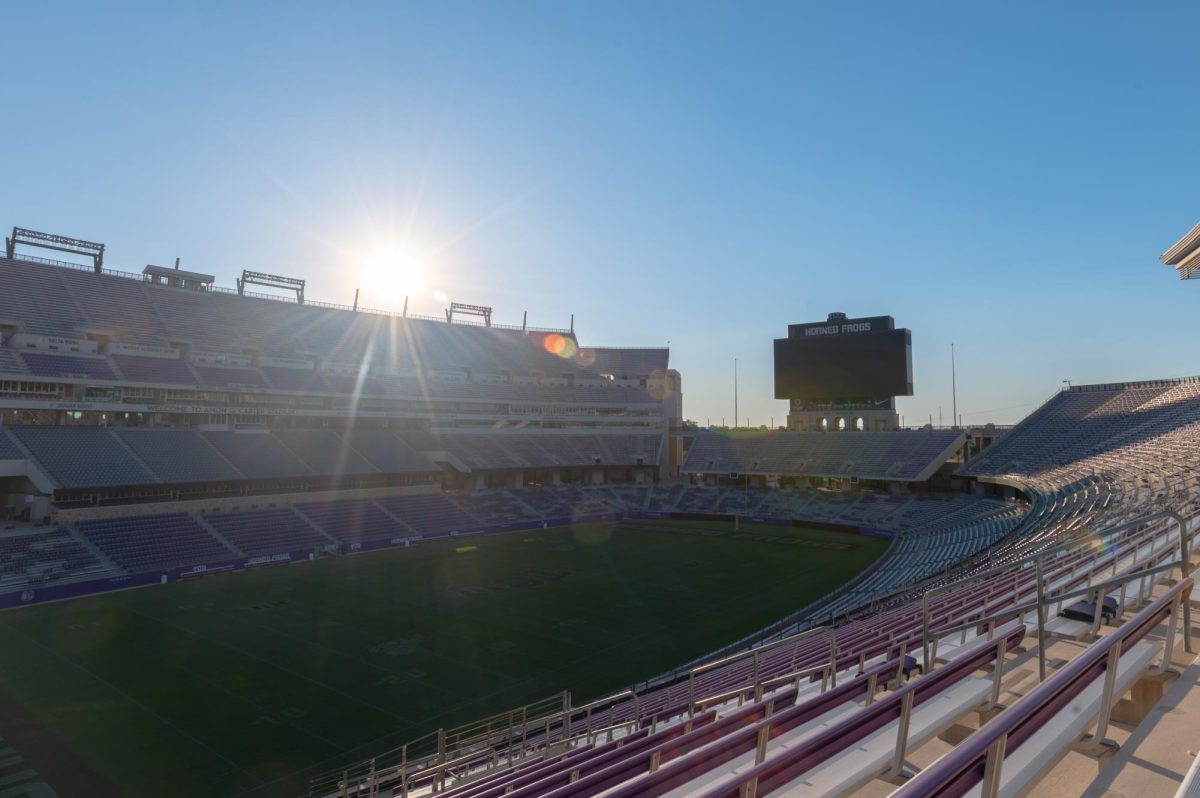Just before the sun rises, garbage trucks are released to roam the streets and gather curbside trash. Once full, these trucks drive to the Southeast Landfill, where they climb up a hill of compressed waste to dump the day’s delivery on top of about 40 years of Fort Worth garbage. From shredded tires to dirt-covered stuffed animals, this landfill has it all. The total Fort Worth population has increased by 14.7 percent since 2010. Thus, the total generation of municipal waste has been increasing. But the Fort Worth City Council plans to cut the amount of trash going into the landfill by 40 percent. The Comprehensive Solid Waste Management Plan, adopted on Sept. 12 and scheduled to remain in effect until 2037, plans to use recycling and other methods to reduce the size of and preserve the city’s landfill. The Southeast Landfill was built in 1976-1977, is operated by Republic Services, and covers 303 acres — that’s larger than TCU’s 272 acres. It is the only destination for Fort Worth trash. Starting in 2005, the landfill allowed trash to be piled vertically above the ground like mini mountains, and at the current rate, the landfill will be full in an estimated 22 to 23 years. At present volume, the landfill takes between 3,000 and 4,000 tons of waste per day; 10 years ago, it could only take about 800 tons per day due to restrictions on filling the trash above ground. “Back in the day, they didn’t allow trash to go above ground, but they know now you can fill it vertically,” said Southeast Landfill operations supervisor Jane Berry. “So you’re creating a pyramid.” The city has identified several alternative ways of handling waste at the landfill in the mid-to-long term:
- Expand the landfill
- Identify and develop Fort Worth’s next landfill
- Build a dual stream transfer station at the landfill for trans-loading waste and recyclables by tractor trailer or railroad
- Create a public‐private landfill development
- Push for improved recycling, waste reduction and composting efforts
The previous city landfill, the Fort Worth Regional Landfill, filled a space of about 100 acres of trash and closed in 1995. Now the old landfill is a grassy hill in northeast Fort Worth. When the Southeast Landfill is full and no longer usable, the trash will be sealed shut and vegetation will be planted over the top. Landfill Cost According to Berry, the replacement for a landfill can take seven to ten years to plan and the development can be very costly. “Operating a landfill is extremely expensive — just the permit is millions of dollars,” she said. In 2017, the total Solid Waste Fund for the city is $63,448,352. The Solid Waste Fund will be provided income from collection of the city’s solid waste and other sources in the city manager’s budget. It is $82 for a resident of Fort Worth to bring their trash to the landfill, and the city garbage trucks negotiate their price. At the Southeast Landfill, $3,579,352 will be paid in 2017 just for the landfill lease revenue. Other expenses include vehicles that Republic Services operates at the landfill such as:
- Two articulated dump trucks
- One excavator
- One motor grader
- Three, soon to be four, landfill compactors
- Six track dozers
Landfill compactors are driven up and down the trash piles every day from open to close to tightly pack in the trash. These compactors are replaced every five years and the $40,000 tires are replaced every six months. Ground Water Pollution The city landfill hasn’t had any ground water contamination, but it continues to protect against pollution with ground water monitoring wells and a slurry wall. “Back in the day, they put landfills by rivers and creeks and these contaminated the water,” Berry said. “Modern landfills have a very strict criterion for lining it, and the slurry wall in a landfill will prevent liquid from going in and out of the landfill.” According to Berry, the landfill cannot have more than one foot of water underneath it. Ground water is intensely monitored at the landfill and if there’s any deviants in ground water, Republic Services ups their testing. Gas Emission The current landfill gas management plan is designed to reduce landfill gases released into the atmosphere by using wells and a flare. Extraction wells pull out gas from the landfill and send it through tubes underground to the flare. The 45-foot tall flare burns off the gas by shooting it through a tube and into the air. “You can see clear flames at night,” Berry said. “But the flare is 98.9 percent destructive efficiency, meaning it can’t pollute the air.” Future Landfill When the city begins to look for a new site for a future landfill, there is an abundance of restrictions. Before a landfill can be built, an environmental impact study must be done to determine:
- The area of land for the landfill
- The composition of the underlying soil and bedrock
- The surface water in the area
- The impact on the local environment and animals
- The historical value of the proposed area
The construction begins after the study is complete, money is raised and the permit is granted. Waste Drop-Off Stations Some trash goes to drop-off stations before being taken to the landfill. Four drop-off stations take waste such as trash, tree limbs and brush, recyclable materials, household chemicals and other donated items. 





